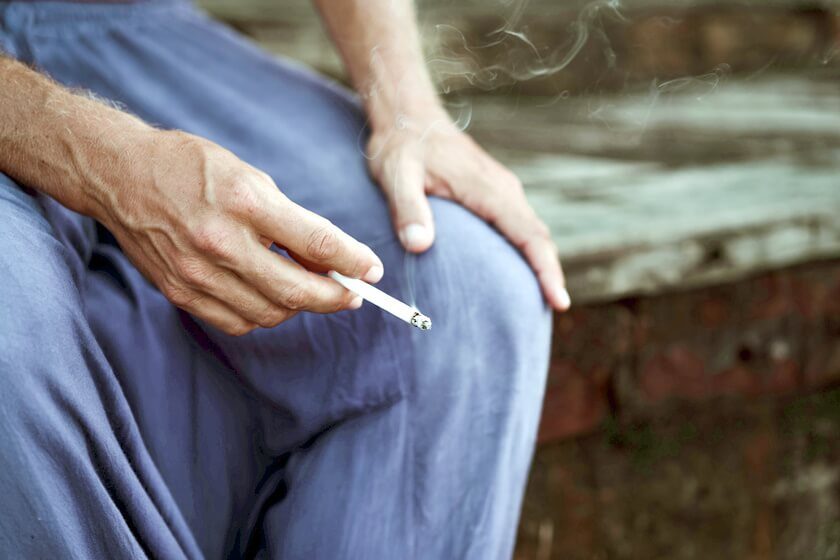
How Smoking Affects Varicose Veins
Varicose veins are a common condition that affects about 20 percent of adults. They occur when the veins become twisted and enlarged, causing them to bulge out from under the skin. Varicose veins can occur anywhere in the body, but they are most common in the legs and feet. Spider veins are a milder form of varicose veins that appear as thin, red, or purple lines on the skin’s surface.
Do Varicose Veins have any relation to Smoking?
Smoking is known to be one of the most significant causes of peripheral arterial disease ( PAD). Additionally, it can also play a role in the aggravation of varicose veins. Nicotine and other chemicals present in cigarettes damage the veins and their walls, leading to the development of varicose veins. Smoking reduces blood flow and impairs the function of the veins. It causes the veins to weaken and lose their elasticity, making them less able to pump blood efficiently. This can cause the blood to pool in the veins, leading to the formation of varicose veins.
Effects of Smoking on the Body:
Smoking has many adverse effects on the body. It can cause a range of health problems, including cancer, heart disease, and lung disease. Smoking also affects the circulatory system, which is responsible for transporting blood around the body. Nicotine in cigarettes constricts blood vessels, causing the blood vessels to narrow and reducing blood flow. This can lead to a range of circulatory problems, including PAD, gangrene and varicose veins.
Also read: Veins vs. Arteries: What’s the Difference?
Treatment of Varicose Veins:
The treatment of varicose veins depends on the severity of the condition. In mild cases, compression stockings can help to reduce the appearance of varicose veins and alleviate discomfort. Compression stockings work by applying pressure to the veins, which helps to improve blood flow and prevent blood from pooling in the veins.
In more severe cases, Varicose Vein Specialist and Vascular Surgeon advise minimal invasive such as sclerotherapy or laser treatment. Sclerotherapy involves injecting a solution into the affected veins, causing them to shrink and eventually disappear. Laser treatment uses endovenous light to heat and destroy the veins, causing them to collapse and fade over time.
In extreme cases, according to Dr. Sumit Kapadia a Senior Varicose Vein Specialist and Vascular surgeons says surgery may be required to remove the affected veins. This is usually reserved for cases where the varicose veins are causing significant pain or affecting mobility. Over the past decade, with advances in modern technology, most patients with varicose veins are very well managed by minimally invasive techniques.
Prevention of Varicose Veins Due to Smoking:
The best way to prevent varicose veins due to smoking is to quit smoking. Smoking cessation can help to reduce the risk of developing varicose veins and can also improve overall circulation and reduce the risk of other health problems. Exercise is also an essential factor in preventing varicose veins. Regular exercise can help to improve circulation and reduce the risk of blood pooling in the veins. Maintaining a healthy weight and a balanced diet can also help to reduce the risk of developing varicose veins.
Smoking is a modifiable risk factor for the development of many health conditions, including varicose veins. This means that it is a behavior that individuals can choose to change to reduce their risk of developing health problems.
Quitting smoking is one of the most effective ways to reduce the risk of developing varicose veins. It can also improve overall circulation and reduce the risk of other health problems, such as heart disease and cancer.
While quitting smoking can be challenging, there are many resources available to help individuals quit. These include nicotine replacement therapy, medications, and counseling services. Quitting smoking can be a long process, and it may take multiple attempts before an individual is successful. However, the benefits of quitting smoking are significant, and it is worth the effort.
In addition to quitting smoking, there are other lifestyle changes that can help to reduce the risk of varicose veins. Regular exercise, maintaining a healthy weight, and eating a balanced diet can all improve circulation and reduce the risk of blood pooling in the veins. Wearing compression stockings can also help to reduce the appearance of varicose veins and alleviate discomfort.
Dr Sumit Kapadia a senior vascular surgeon says, smoking is a modifiable risk factor for the development of varicose veins. By quitting smoking and making other lifestyle changes, individuals can reduce their risk of developing varicose veins and improve their overall health. It is never too late to quit smoking and start making positive changes to improve your health and well-being.
Also read: Top 8 Myths & Facts About Varicose Veins
Conclusion
Smoking is a significant risk factor for the development of varicose veins. Nicotine and other chemicals in cigarettes damage the veins and can impair their function, leading to the formation of varicose veins. Quitting smoking is the best way to reduce the risk of developing varicose veins and improve overall circulation. If you already have varicose veins, treatment options are available, including compression stockings, sclerotherapy, laser treatment, and surgery. By taking steps to improve your overall health and lifestyle, you can reduce your risk of developing varicose veins and improve your overall well-being.




